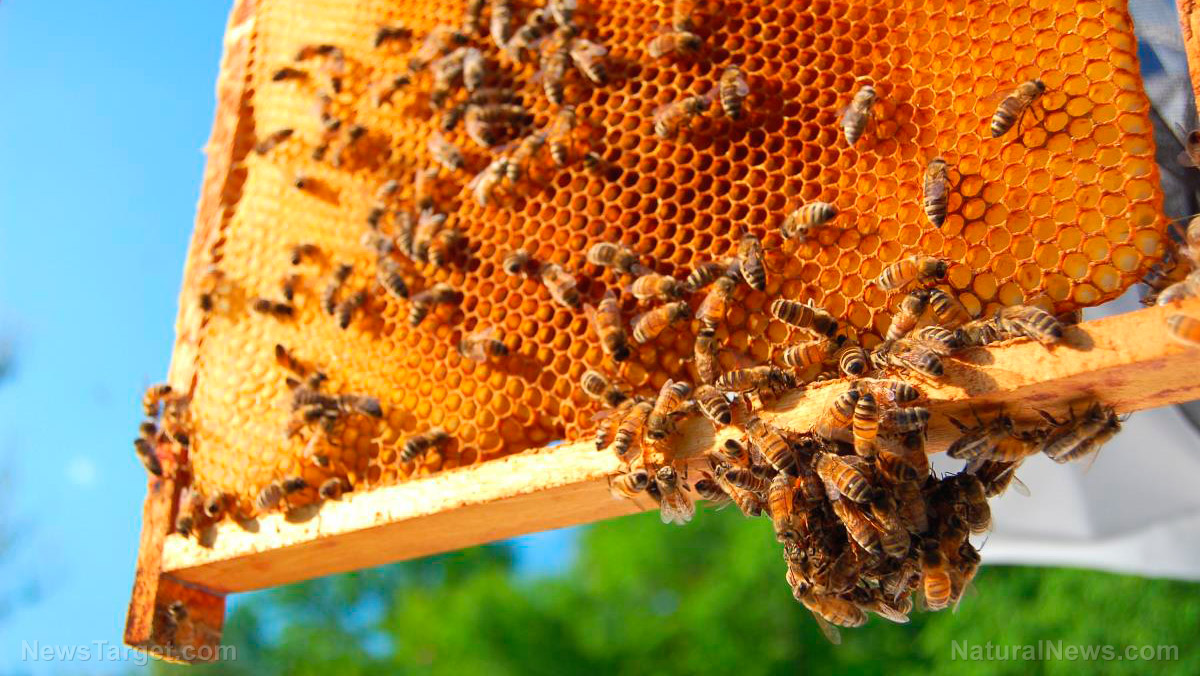It’s not just pesticides that are wiping out bee pollinators… scientists now find that ANTIBIOTICS have a 50% kill rate of honey bees
01/08/2019 / By Russel Davis

Antibiotic treatment may actually do more harm than good for honeybees, according to a recent study. Beekeepers spray honeybee colonies with antibiotics to help stave off foul brood. This treatment is typically done to beehives several times a year to prevent bacterial infections that may damage the larvae.
To test the effects of antibiotics on honeybees, researchers from The University of Texas at Austin examined hundreds of honeybees that were fed with either antibiotic-containing syrup or plain syrup. The results showed that only one-third of honeybees that received antibiotics were still alive three days after their reintroduction to the hive, compared with about two-thirds of untreated honeybees. Study data revealed that honeybees exposed to antibiotic treatment had significantly lower levels of naturally occurring gut microbes, which facilitate nutrition absorption and eliminate toxins and pathogens. Researchers said antibiotics cleared out beneficial gut bacteria in treated honeybees, which in turn resulted in the proliferation of harmful gut bacteria such as Serratia — a pathogenic bacterium that affects both animals and humans. The increased mortality in treated honeybees might be caused by the elimination of gut microbes that provide natural protection against dangerous infections, researchers added.
The findings published in the journal PLOS Biology proved significant to U.S. beekeepers and the agriculture industry. “Our study suggests that perturbing the gut microbiome of honeybees is a factor, perhaps one of many, that could make them more susceptible to declining and to the colony collapsing. Antibiotics may have been an underappreciated factor in colony collapse,” said lead researcher Professor Nancy Moran.
The beekeepers’ use of antibiotics prove to be beneficial in protecting their hives from foul brood. However, the results suggest that they should also consider the amount and frequency in treating the beehives, a researcher quipped.
The results also suggest that overuse of antibiotics might lead to increased odds of pathogen-related infection. “We aren’t suggesting people stop using antibiotics. Antibiotics save lives. We definitely need them. We just need to be careful how we use them,” Prof. Moran added.
A follow-up experiment on honeybee mortality revealed that bees exposed to antibiotic treatment showed higher rates of Serratia-related mortality compared with untreated bees. The results were only apparent in bees, but may have equal implications in humans taking antibiotics. Extra caution should be exercised when using the treatment, a researcher added.
Bee pathogens have implications on human health
Researchers have also stressed the presence of Serratia in treated honeybees. Serratia is a pathogenic bacterium that has been noted as a frequent source of hospital infection outbreaks. Surveillance data showed that the pathogen was associated with 6.5 percent of all Gram negative infection in Intensive Care Units in the U.S. and Europe, and in about 3.5 percent in non-ICU patients. Serratia is currently the seventh most common cause of pneumonia in adults. The pathogen was accounted for 4.1 percent pneumonia incidence in the U.S., 3.2 percent in Europe and 2.4 percent in Latin America. Serratia was considered the tenth most common cause of blood stream infection among hospitalized patients with a 2 percent incidence rate.
The pathogen was also associated with a host of adverse health conditions including lower respiratory tract infection, urinary tract infection and surgical wound infection in hospitalized adults. However, 30 to 50 percent of adult patients appeared to be asymptomatic to Serratia-induced urinary tract infection. Pediatric patients exposed to Serratia were also found to suffer from meningitis and wound infections. Serratia-induced meningitis or cerebral abscesses may occur in premature children and neonates who had preexisting sepsis, or following a head surgery, neurosurgery, or lumbar puncture.
The pathogen was also associated with high rates of ocular infection, endocarditis and skin and soft tissue infection.
Sources include:
Tagged Under: Antibiotics, Ecology, environment, honeybees, Prescription drugs


















